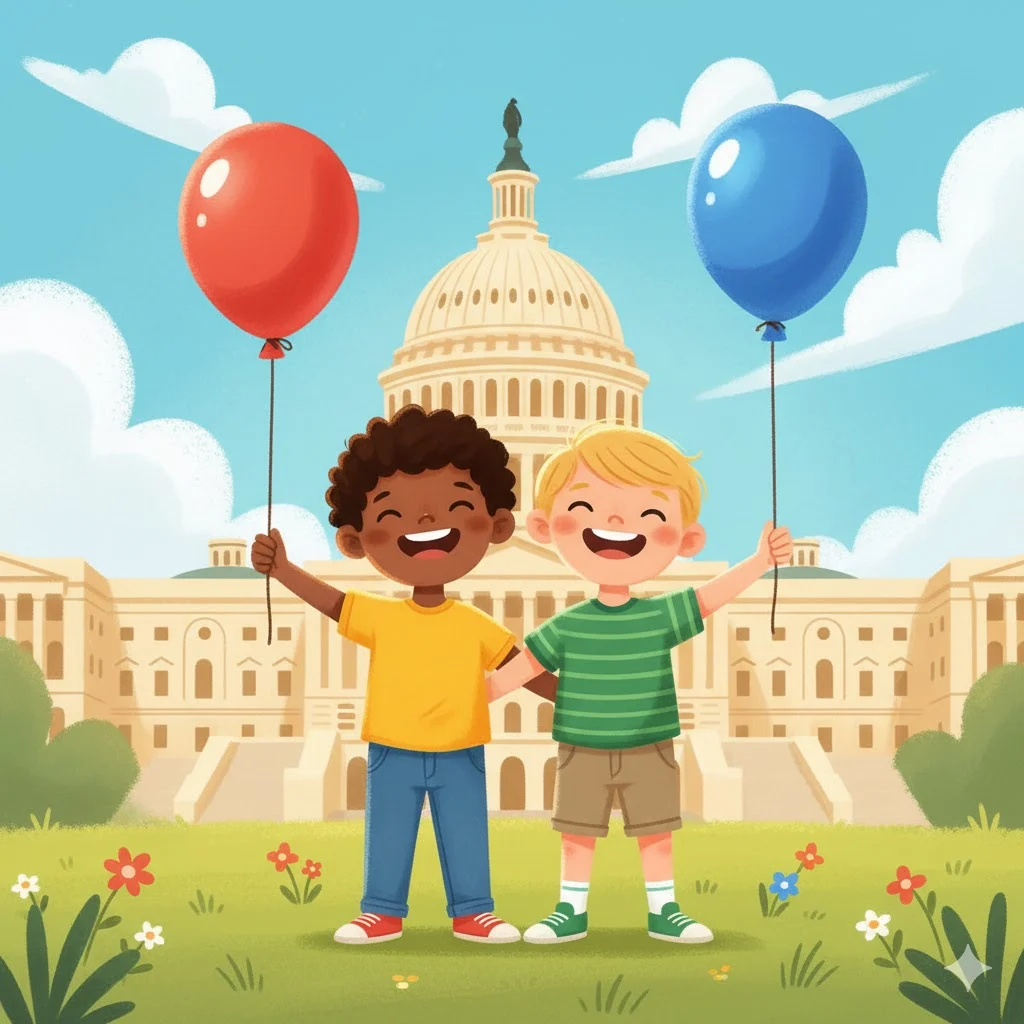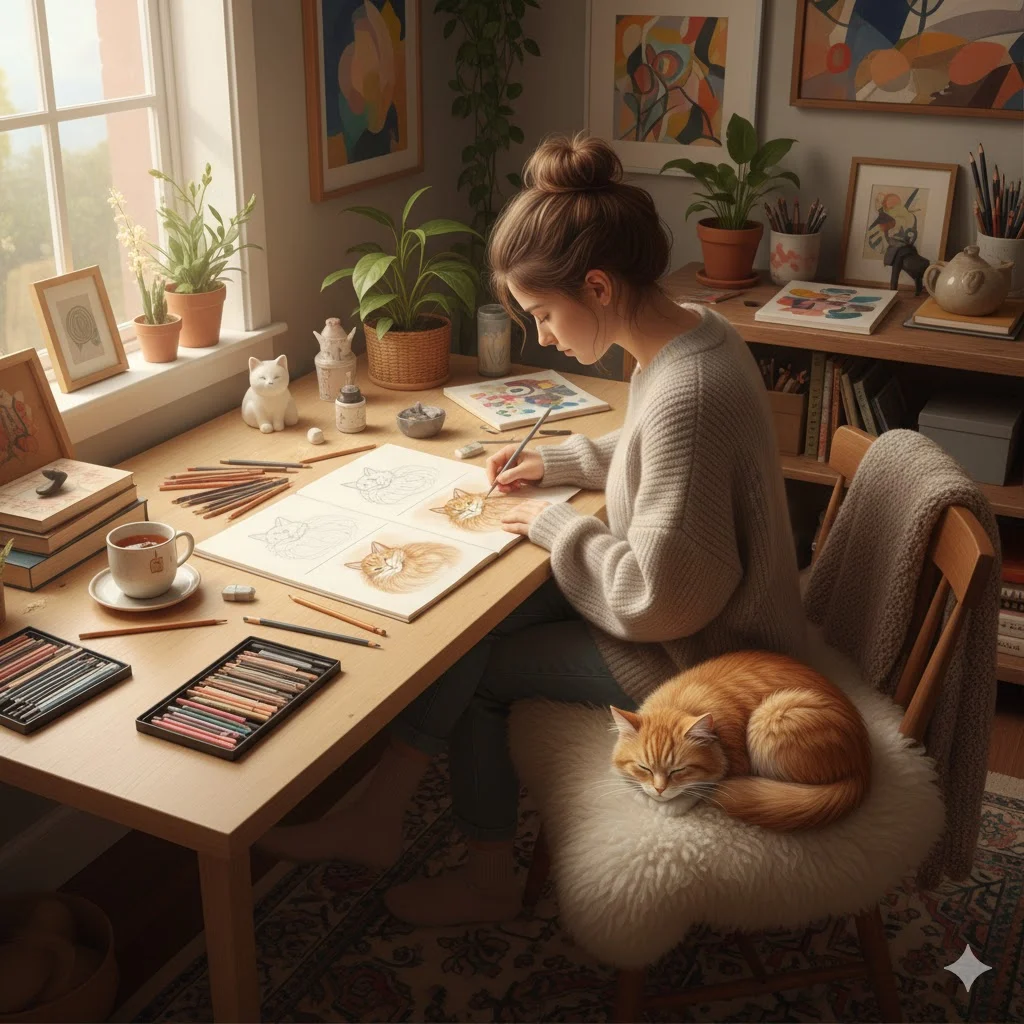Politics can feel confusing even for adults — so how do you explain it to a child?
Words like Democrat and Republican might sound serious or even scary, but children are naturally curious about the world. They hear adults talk about “voting,” “elections,” and “presidents” — and they want to understand.
If you’re a parent, teacher, or older sibling, your goal isn’t to convince them of a side — it’s to help them understand that people can care about their country in different ways.
This article will help you explain Democrats vs Republicans to kids through simple stories, real-life examples, and values-based lessons like teamwork, fairness, and independence.
By the end, your child will learn that it’s okay to think differently — and that what really matters is respect, kindness, and understanding.
🧩 Step 1: Start With the Basics — What Is a Political Party?
Before introducing Democrats or Republicans, start with something simple:
“A political party is like a big team of people who share ideas about how to make the country a better place.”
You can add:
“Each team has its own plan for solving problems like helping people find jobs, keeping schools strong, or keeping everyone safe.”
Think of it like a classroom project.
Sometimes, one group wants to paint a mural, and another group wants to plant a garden. Both want to make the school beautiful — they just have different ways to do it.
That’s how political parties work — different ideas, same goal.
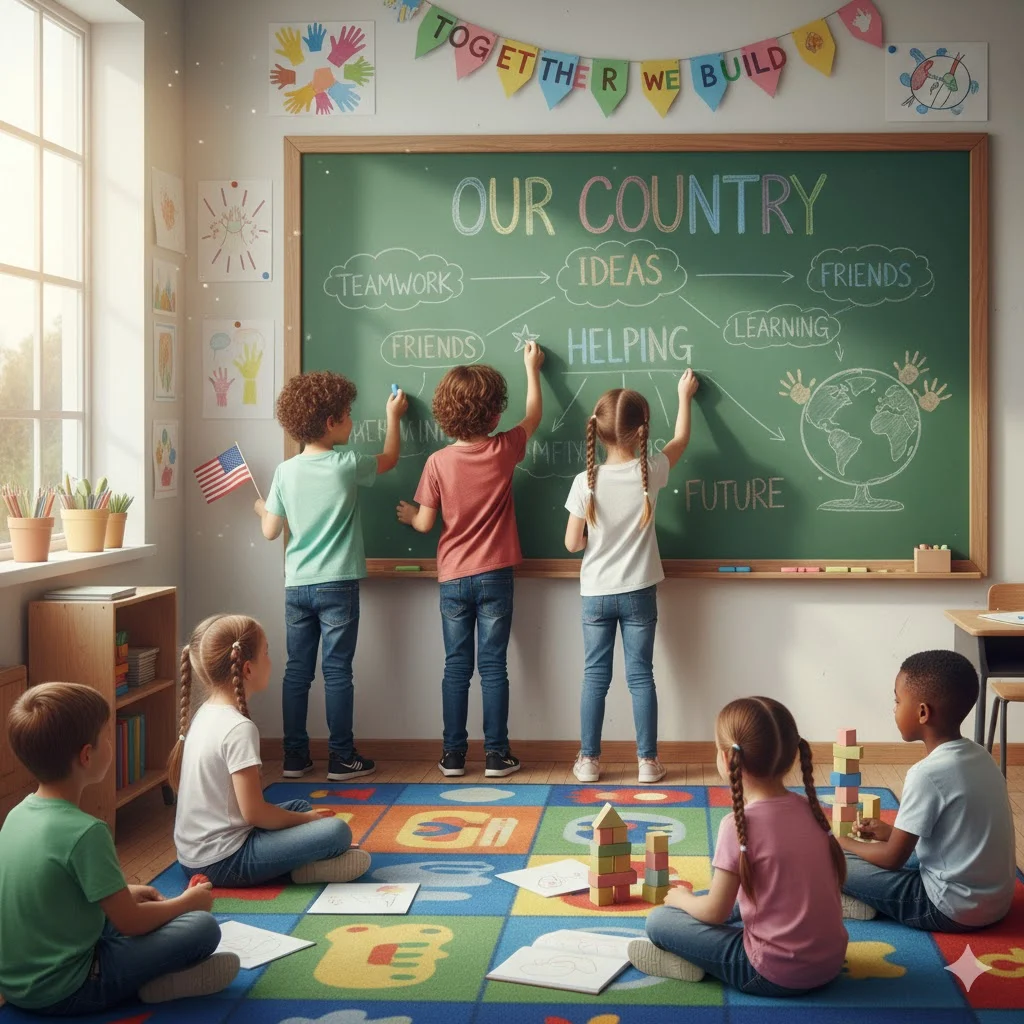
🟦 Step 2: Who Are the Democrats?
Democrats are one of the two biggest political parties in the United States.
Their main symbol is a donkey, and their color is blue.
Here’s how you can explain it to a child:
“Democrats believe the government should help take care of people — especially those who might need extra help. They think teamwork and fairness make the country stronger.”
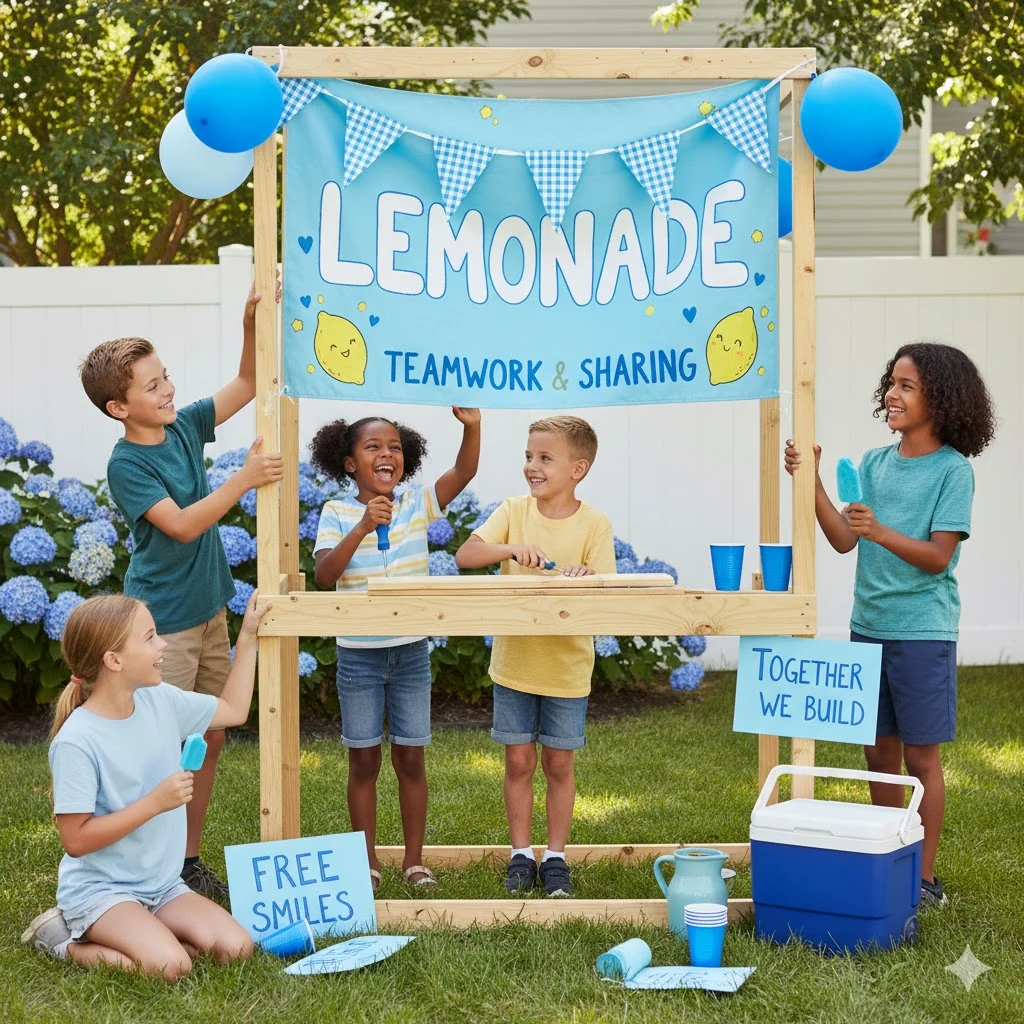
🧠 Core Values of Democrats (Kid-Friendly Terms):
- Teamwork: Working together helps everyone.
- Fairness: Everyone should have a chance to succeed.
- Community: Helping each other makes life better.
- Equality: No one should be treated unfairly because of who they are.
💬 Example Story:
Imagine two kids, Maya and Leo, who want to run a lemonade stand.
Maya says,
“Let’s work together and share the money so everyone gets to buy lemons and sugar!”
She believes teamwork makes it fair and fun.
That’s how Democrats usually see things — stronger together.
🟥 Step 3: Who Are the Republicans?
Republicans are the other big political party.
Their symbol is an elephant, and their color is red.
Here’s a simple explanation for kids:
“Republicans believe people should have the freedom to make their own choices. They think that if people work hard and take responsibility, the country will do well.”
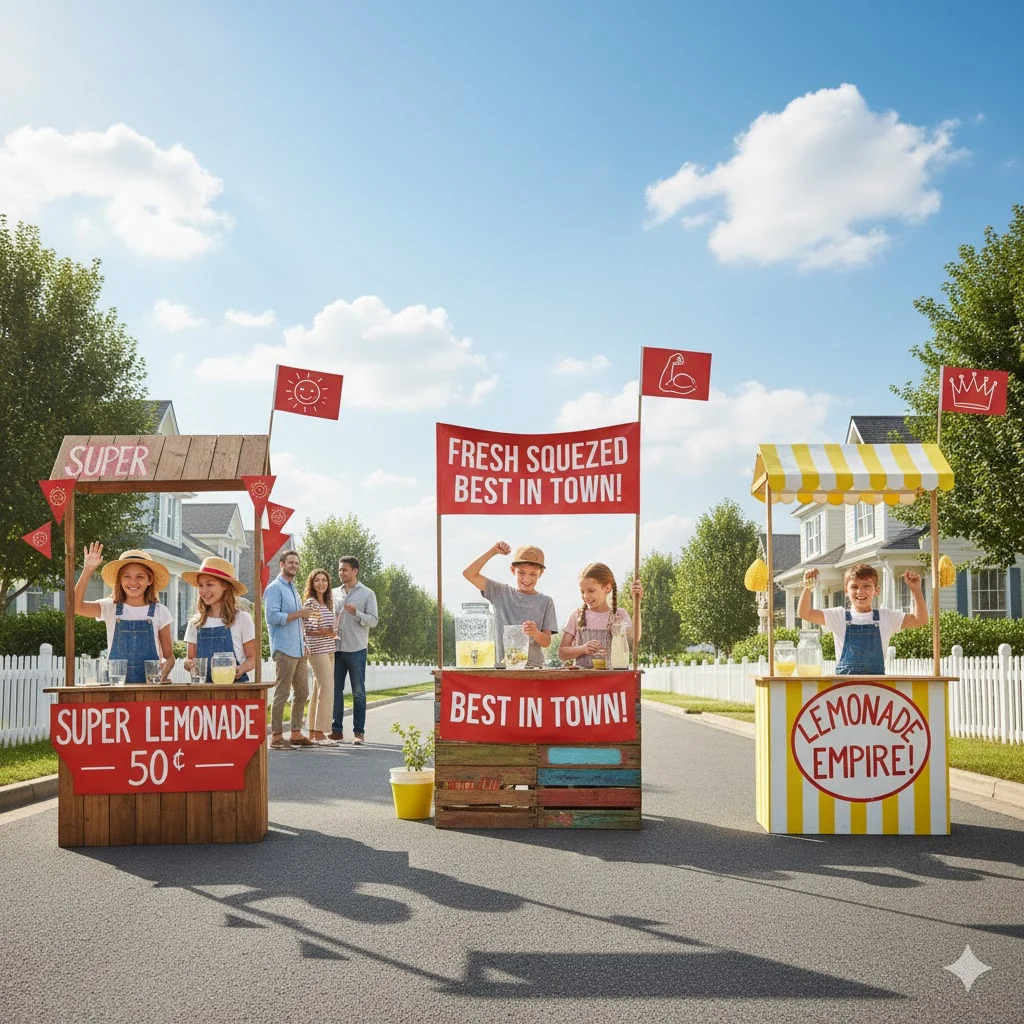
🧠 Core Values of Republicans (Kid-Friendly Terms):
- Freedom: People should choose for themselves.
- Responsibility: Everyone should work hard for what they want.
- Tradition: Old lessons can still teach us good things.
- Independence: Too many rules can make it hard to grow.
💬 Example Story:
Now imagine another kid, Liam. He says,
“I’ll run my own lemonade stand. If I work hard, I’ll earn enough money to buy more supplies myself!”
He believes in independence and effort.
That’s how Republicans often think — hard work brings success.
🗽 Step 4: Why People Have Different Opinions
Kids might ask:
“But which one is right?”
The best answer is:
“Neither one is all right or all wrong. People just have different ideas about how to solve problems.”
Both Democrats and Republicans want:
- Good schools
- Safe neighborhoods
- Strong families
- A healthy country
They just disagree on how to get there.
One side might believe in teamwork through government support.
The other might believe in individual effort and less government involvement.
Use examples from everyday life:
“Some families decide to share all chores equally. Others have everyone take care of their own room. Both families still care about keeping the house clean — they just do it differently.”
🤝 Step 5: Teach Respect for Different Opinions
Politics can teach one of the most important life lessons: respecting others, even when you disagree.
Children learn from your tone and words. When you talk about politics kindly, they learn kindness too.
Encourage them to:
- Listen before answering
- Ask questions when something feels confusing
- Be kind to friends with different ideas
You can say:
“In our country, everyone gets to vote for what they believe. That’s called democracy. It works best when we listen to each other.”
💡 Step 6: Use Real-World Examples Kids Understand
Kids learn best from what they see and feel.
Here are simple examples you can use:
| Everyday Example | What Democrats Might Say | What Republicans Might Say |
|---|---|---|
| School Lunches | Everyone should get free lunch so no one goes hungry. | Parents should choose what’s best for their kids’ lunch. |
| Helping the Poor | The government should help people with food and jobs. | Communities and charities can help instead of the government. |
| Rules | More rules help keep people safe and fair. | Fewer rules let people make their own choices. |
Each view has good intentions — they just look at the world differently.
👨👩👧 Step 7: Keep It Age-Appropriate
You can adjust your explanation depending on age:
Ages 5–7:
Keep it short and story-based. Use lemonade stands, classroom examples, or family chores.
Ages 8–10:
Add simple real-world examples like elections, taxes, or helping neighbors.
Ages 11–13:
Start talking about voting, laws, and how leaders make decisions.
No matter the age, always remind them that being respectful and fair is more important than being “right.”
🎓 Step 8: Encourage Critical Thinking
After explaining both sides, ask open-ended questions:
- “Why do you think teamwork is important?”
- “What happens if people don’t follow rules?”
- “How can we help others and still let people choose for themselves?”
These help kids think — not just copy opinions.
They’ll learn to form their own thoughts and respect others’ perspectives.
📘 Step 9: Add Historical Context (For Older Kids)
You can briefly mention:
- The Democratic Party started in the early 1800s, focusing on the “common people.”
- The Republican Party began in the 1850s, originally to stop slavery and protect freedom.
Over time, both parties changed — but they’ve always believed in democracy and improving the country.
Kids love stories, so frame it like this:
“Long ago, people wanted to make rules that were fair for everyone. Some wanted to focus on community help, and others wanted people to have more freedom. Both wanted the country to be strong — and that’s how these two big teams began.”
🙋♀️ FAQs: Explaining Politics to Kids
Q1: What’s the easiest way to explain Democrats and Republicans to children?
Use examples they understand — like teamwork vs independence — and connect it to daily life, like sharing toys or doing chores.
Q2: Should I tell my child which political party is better?
No. Instead, encourage curiosity. Let them ask questions and form their own opinions over time.
Q3: What age should kids learn about politics?
Start around age 7–8 with basic fairness and teamwork lessons, and build from there.
Q4: How do I stop kids from feeling scared or confused about elections?
Remind them that elections are how people share their voices — and that everyone’s vote helps the country stay fair and free.
✨ Final Thought: Raising Kind, Curious Citizens
When you explain Democrat vs Republican to a child, focus less on who’s right and more on why people think differently.
Democrats value teamwork and equality.
Republicans value freedom and responsibility.
Both care about the country — just in different ways.
Your goal isn’t to raise a Democrat or a Republican — it’s to raise a curious, respectful, and kind thinker who values listening, fairness, and compassion.
“If this guide helped you talk about politics kindly with your child, share it with other parents or teachers who want to do the same!”

